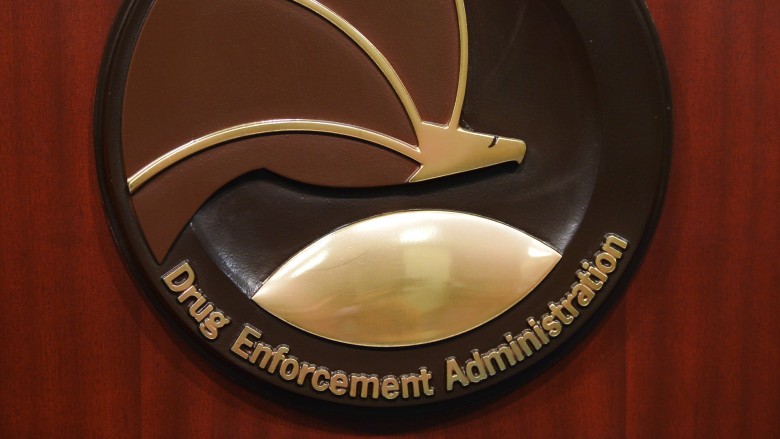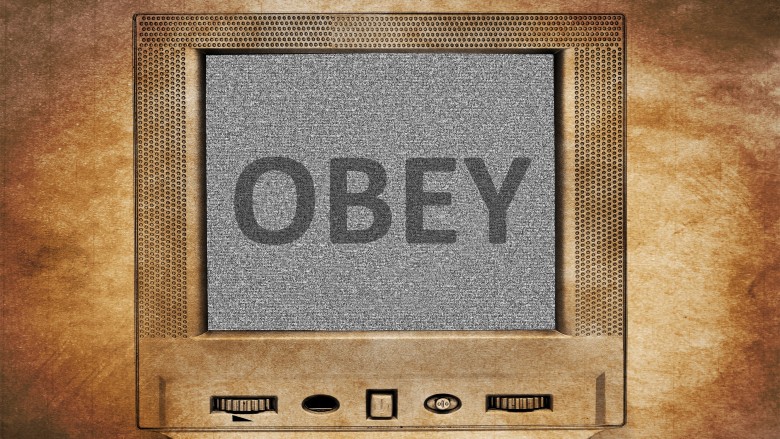The Untold Truth Of Psychedelics
Psychedelics, also called hallucinogens, make a person "trip" or see and hear things that aren't really there. However, that's where the knowledge of these drugs end for a lot of people. Psychedelics are currently illegal in the United States, but of course people still use them, including some unlikely individuals like a Nobel Prize winner, the CIA, and even psychiatrists. So what's really so magical about these mushrooms? What do some people know about Lucy that you don't?
And the Nobel goes to...
Pop culture, especially when it comes to music, is riddled with stories of how psychedelics opened artists' minds so they could create their masterpiece. The Beatles are the most famous example of this, with their experimentation with LSD. However, it's not just pop icons or artists who use psychedelics as a form of inspiration. Nobel Prize–winning chemist Kary Mullis, who won the prize in 1993 for revolutionizing the way we analyze DNA, is also notorious for his involvement with hallucinogens.
The certified genius ingests LSD as if it were candy, and the habit has been going on for years. Speaking with The Washington Post, he tells a tale of one time seeing a glowing raccoon speaking to him. He also details how he once sat with O.J. Simpson and was very close to being taken aboard to show how the DNA at the infamous crime scene could not have been Simpson's.
Kary Mullis is a man you could easily call crazy (he also is a scientist that firmly believes in the power of astrology), but he's still a man that changed the world with his Nobel-worthy ideas.
Kicking addiction
While hallucinogens can produce rather hilarious or even dangerous side effects, they can apparently also be a medical marvel. As America continues its war on drugs, opiate addiction has taken center stage. According to new research, psychedelics can help a person recover from addiction and be a positive influence on their life.
Other illegal drugs like heroin and cocaine just make a person's addiction to opiates worse. However, while drugs like LSD and magic mushrooms are also illegal, they have shown in studies to be medically beneficial. This is especially ironic when one takes into account that the DEA places psychedelics in the Schedule I category of drugs and illegal substances, one of the requisites for which is having absolutely no medical value.
A new kind of therapy
Researchers have noted that psilocybin, the active chemical ingredient in magic mushrooms, can help treat anxiety, depression and even PTSD. The Multidisciplinary Association for Psychedelic Studies (or MAPS) has noted overwhelming success rates when patients certain mental illnesses receive psychedelic treatment.
They've shown extra huge success with cancer patients. When faced with the looming possibility—or in some cases, certainty—of death, anxiety and depression can spike to incredible levels. Doctors who have selected certain cancer patients for trial treatments involving psilocybin say it helps these people positively approach their current situation. Instead of negatively obsessing over death, the psychedelics allow them to feel more accepting of their predicament and more at peace.
Bit by bit
A new trend called microdosing has brought psychedelics to the forefront of popular science, and it's something virtually anyone can do. As can easily be discerned from the name, microdosing involves taking tiny amounts of psychedelic substances instead of the full dose. By doing this, a person doesn't dive into the big "trip" that most people talk about when talking psychedelics. Instead, they are said to become more productive and happier. Vice even interviewed a man who ended up winning a national sales award in corporate banking as a result of his microdosing habits.
Unfortunately, microdosing is currently more of a social experiment than a scientific one. There haven't been any funded scientific experiments surrounding the subject, and this is something many scientists would like to change. Until then, all we have are firsthand accounts.
To legalize or not to legalize?
So if there are so many positives that can come from ingesting psychedelics, why are they illegal?
Like marijuana, the DEA has created a certain stigma around psychedelics. There are also of course always risks whenever you take any drug. Unlike heroin or cocaine, overdosing on psychedelic substances is extremely rare. That's not the issue. The issue is how a person's behavior and mental state can change when taking too much LSD, psilocybin, or other hallucinogens.
The cardinal rule when it comes to experimenting with these kinds of substances is to have the appropriate "set and setting." If you take too much and you happen to be in an environment that makes you feel uncomfortable to begin with, your mental state could drastically change for the worse and even lead to self-harm or harm of others. However, remember that these situations are uncontrolled. Scientists are currently making a case with all of their findings for medically controlled use of psychedelics, and the FDA is listening. The lingering question then is: will psychedelics soon follow in the footsteps of medical marijuana?
MKUltra
Speaking of the US government, they're no strangers to psychedelics, either. The CIA once launched a project called MKUltra during which they used psychedelics like LSD on their test subjects. The goal of the secret project was officially labeled "behavioral modification," which most people have taken to mean "mind control." As with most top secret CIA projects, the public will most likely never know all the details.
However, regular citizens aren't the only ones who have expressed concern about and interest in MKUltra. There was at one point a joint hearing that took place to discuss whether or not the CIA was abusing people during their experiments. Funny how illegal substances are not so illegal for the government, isn't it?
Sprechen sie dolphin?
Yes, this is really real. NASA launched a project in the 1960s aimed toward communicating with other creatures. For their test subjects, the scientists chose dolphins. The goal was to see if they could get humans and dolphins to communicate in ways they never had before. During the experiments, neuroscientist Dr. John Lilly, who was responsible for the project, injected dolphins with LSD to see if it would help interspecies communication.
As one could imagine, it didn't work. But something interesting did come out of the trials. A woman named Margaret Lovatt who participated in the study became very close with one particular dolphin named Peter. If a scientific breakthrough didn't occur as a result of these experiments, at least a bit of love did.
The ancients did it
Experimenting with psychedelics is an activity that people have done for thousands of years. The hallucinogen called ayahuasca, for example, was revered by the ancient Amazons for its supposed healing properties. In fact, the ancient tradition of ayahuasca shamans still exists today. These shamans engage in the ancient rituals surrounding the hallucinogen to heal those who need medicine. For these rituals, the ayahuasca is usually made into a kind of brew. It is a part of their culture that is sacred because of its history and wisdom.
The experience of taking ayahuasca, though, isn't an overwhelmingly pleasant one. It can even induce serious vomiting. However, ayahuasca, as one shaman reveals, is something that requires patience. He recommends multiple sessions for those who truly need healing, and in the end they will come to a much better place, physically and spiritually.
The odd one out
Salvia is another hallucinogen that has been used in ceremonies and rituals for its medicinal properties. The Mazatec people in Mexico have a long history with this drug. For them, it is also a highly religious experience to engage with salvia. However, salvia can be one of the most terrifying hallucinogens out there. According to Vice, this substance is known as an "atypical psychedelic" that can even cause problems for the most experienced drug users. Make no mistake, there is no such thing as an easy trip with salvia.
Part of what makes salvia so unique among psychedelics is that it crosses the senses, a condition known as synesthesia. For substances like LSD, synesthesia usually consists of the well-known side effect of "seeing music" or "hearing colors." For salvia, the synesthesia is quite different and much more intense. It confuses sight with touch. For example, if you hallucinate that you see a bunch of bugs, you will feel like they are in or on you. Salvia is also one of the most difficult psychedelics to experience because it can lead you down a dark, introspective path or even make you feel like you're crossing over into different dimensions. Oddly enough, though, this one is federally legal. Because that makes sense.









